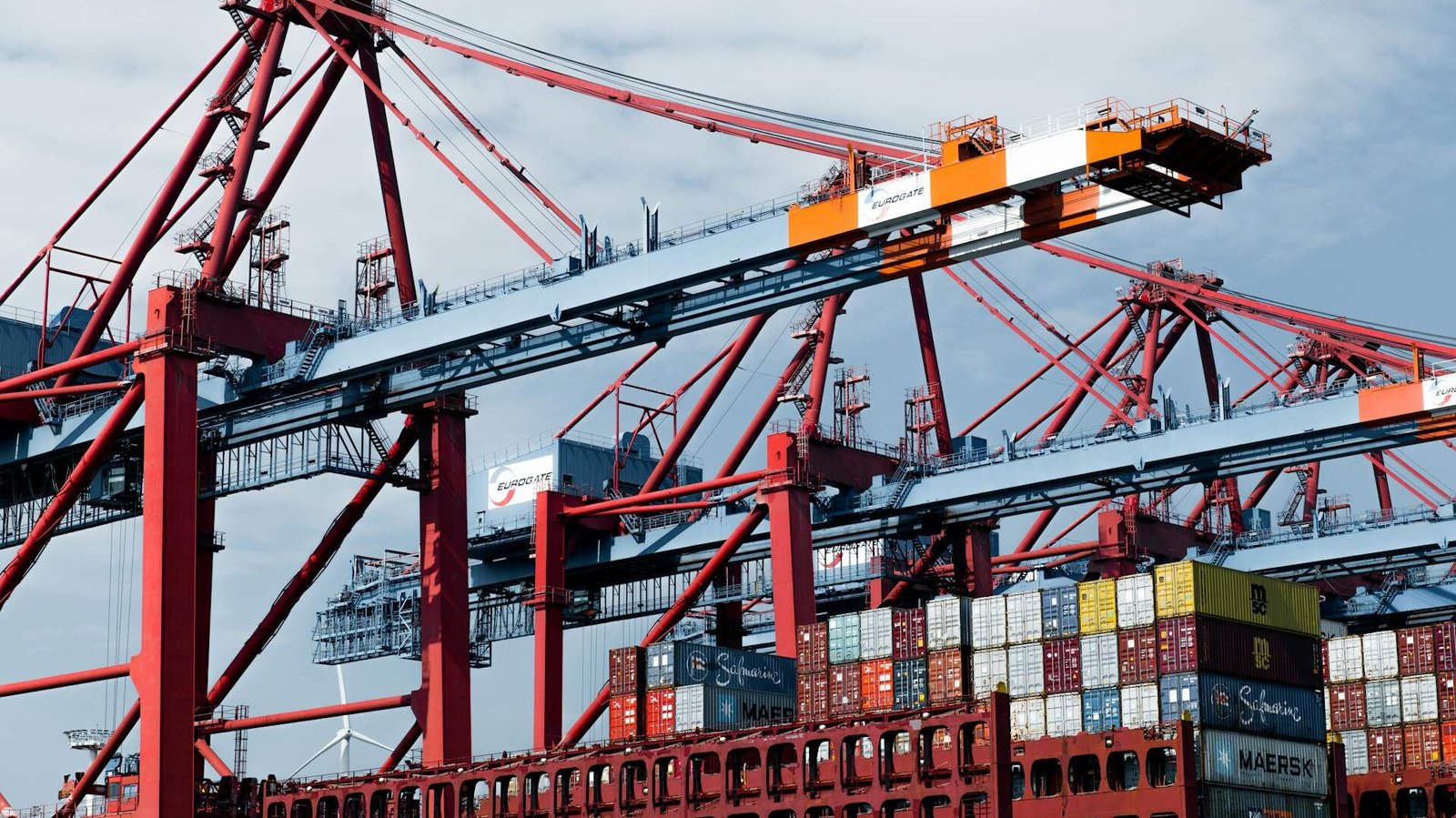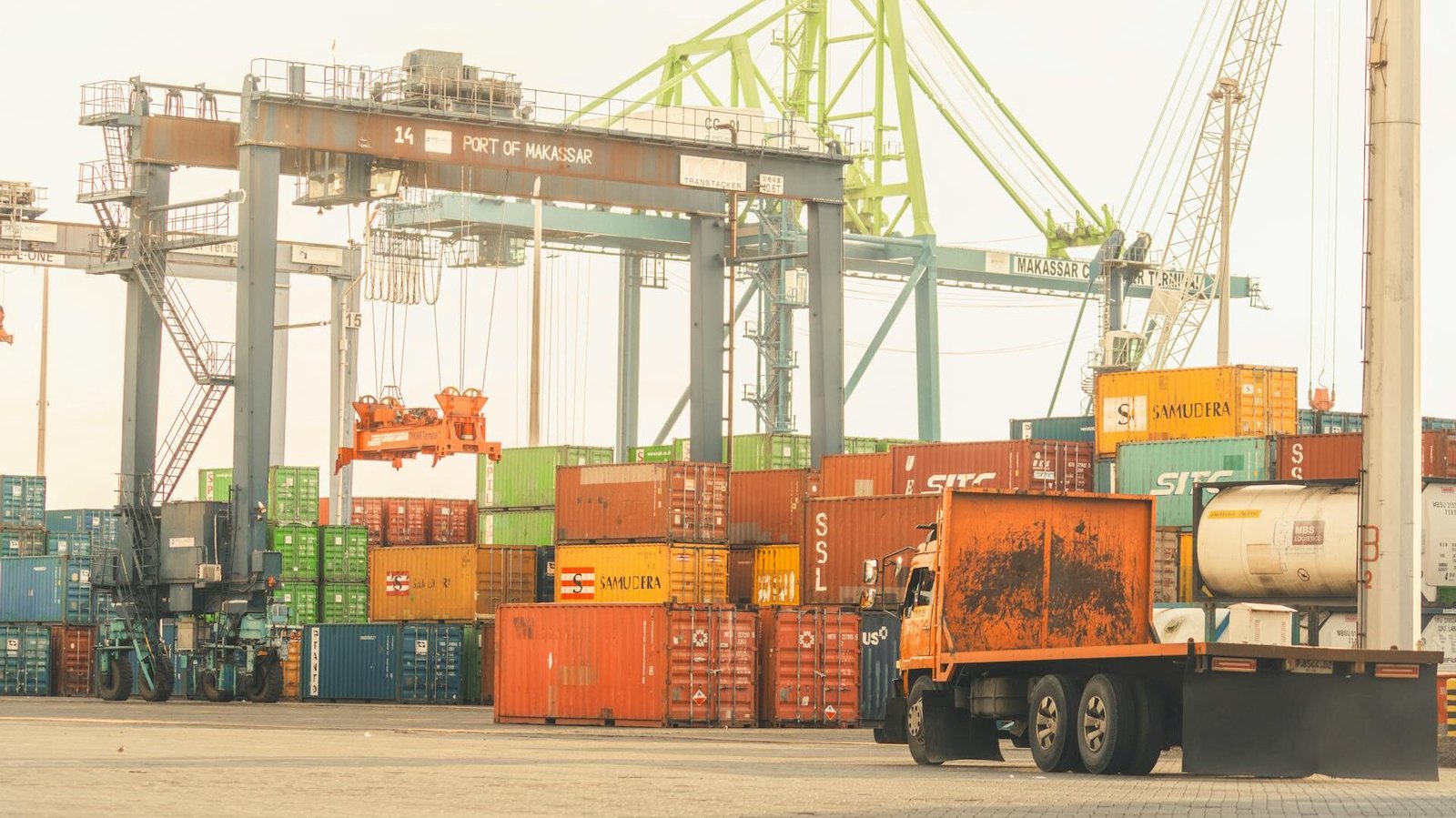
1. Introduction: Cargo Ownership Security – The Lifeline of Battery Export Enterprises
Recently, in the battery export industry, a batch of lithium – battery export orders worth millions are about to be shipped. At this time, what do enterprises worry about most? Is it the high transportation cost or the delayed delivery of goods? In fact, enterprises are most concerned about the security of cargo ownership.
The choice of battery transportation is not only about cost but also about cargo – ownership risk management. In the transportation of high – value and high – risk bulk batteries, the control of cargo ownership is like the lifeline of enterprises. The CIF (Cost, Insurance, and Freight) and DDU (Delivered Duty Unpaid) models, through their unique institutional designs, can ensure that “my goods are always under my control.”
2. Basic Concepts: Essential Differences in Cargo – Ownership Control among Three Modes
2.1 “Dual – Clearance and Tax – Included” (Dangerous Surrender of Cargo Ownership)
The “Dual – Clearance and Tax – Included” service is essentially a gray – area customs – clearance operation in the form of cargo – ownership trusteeship. Its operation methods are full of problems. Usually, through mixed – bill declarations and borrowing of qualifications, the goods are separated from the actual cargo owner’s control in legal documents. It’s like the cargo owner entrusts their goods to an unreliable “steward” and unknowingly loses control of the goods.
For example, some freight forwarders, when providing the “Dual – Clearance and Tax – Included” service, mix the goods of different cargo owners for declaration to reduce costs. Once a problem occurs, it is very difficult for the cargo owner to prove the ownership of the goods, and the cargo ownership becomes unclear.
2.2 CIF (Controlling Cargo by Documents with Clear Cargo Ownership)
CIF refers to the model of Cost, Insurance, and Freight. The core of its cargo – ownership control lies in controlling the cargo through the original bill of lading, which is the “document of title.” In the CIF model, as long as the cargo owner holds the original bill of lading, it means they own the goods. As long as the cargo owner does not deliver the bill of lading, the goods will not be picked up, thus effectively safeguarding the cargo ownership. For instance, when the goods are in transit, the cargo owner can control the flow of the goods by virtue of the bill of lading, ensuring that the goods are transported and delivered as they wish.
2.3 DDU (Full – Process Control with Continuous Cargo Ownership)
DDU is the Delivered Duty Unpaid model. The core of its cargo – ownership control is dual control in terms of both physical and legal aspects, and the seller is responsible for the entire transportation process. During the transportation, the goods are always under the actual control of the seller. From the moment the goods leave the seller’s warehouse to the time they reach the buyer’s designated location, the seller can keep track of every step. In this model, the cargo ownership is clear and definite, just like the seller always holds the “key” to the goods, ensuring their safety.

3. Risk Warnings: Crisis of Cargo – Ownership Loss under “Dual – Clearance and Tax – Included”
3.1 Legal Risks of Cargo – Ownership Attribution
Mixed – bill declarations lead to difficulties in determining the ownership of goods. Since the goods of different cargo owners are mixed for declaration, it is very difficult to determine the actual ownership of each batch of goods once a problem occurs during transportation or customs clearance. The misplacement of the declaration subject also causes confusion in the legal determination of cargo ownership. Some freight forwarders borrow the qualifications of other companies for declaration, making the legal owner of the goods in the documents different from the actual cargo owner. This will bring great trouble to the cargo owner in case of a dispute.
3.2 Lack of Control during Transportation
The “Dual – Clearance and Tax – Included” service involves black – box operations, and the transportation process is opaque. The cargo owner has no way of knowing the actual transportation situation of the goods, such as whether the goods have been shipped on time or whether they have encountered risks during transportation. For high – risk goods like batteries, there is also a lack of special handling for dangerous goods. Some freight forwarders may cut corners to reduce costs and fail to package and transport the batteries according to the regulations, thus increasing the safety risks of the goods.
3.3 Inability to Seek Relief after a Problem Occurs
Once a problem occurs with the goods, the cargo owner has no way to claim compensation. Because the freight forwarder may not have sufficient funds and capabilities to bear the high – amount compensation. Moreover, it is difficult for the cargo owner to provide evidence. Since the goods are out of the actual control in legal documents, it is very difficult to prove that the detained goods belong to them. Ultimately, the cargo owner often loses both the goods and the payment, suffering huge economic losses.
4. Safety Assurance: How CIF and DDU Ensure Continuous Cargo – Ownership Control
4.1 CIF Model: Controlling by Documents with Safety Assurance
Bill – of – Lading Control Mechanism
In the CIF model, the cargo ownership is controlled by the original bill of lading. Only when the buyer pays the payment will the seller deliver the bill of lading, thus realizing the “payment against documents” process and ensuring the exchange between “payment” and “cargo ownership.” Meanwhile, the bank’s credit is involved, and the transaction safety is guaranteed through the letter of credit. The bank plays a role of supervision and guarantee in the whole transaction process, ensuring that both the buyer and the seller fulfill their obligations as agreed in the contract.
Clear Boundaries of Risk Control
In the CIF model, the risk is divided at the ship’s rail, and the rights and responsibilities are clearly defined. Before the goods cross the ship’s rail, the risk is borne by the seller; after that, the risk is borne by the buyer. The cargo owner can independently choose a qualified carrier, such as a shipping company with DG (Dangerous Goods) qualifications, to ensure the safety of goods transportation. Moreover, the cargo owner is the beneficiary of the insurance. In case the goods encounter risks, the cargo owner can get compensation to reduce the losses.
4.2 DDU Model: Full – Process Control with Continuous Cargo – Ownership
Physical – Control Assurance
In the DDU model, the seller designates a first – level freight forwarder to achieve full – process logistics control. The goods are always transported in the name of the seller, and the cargo ownership is clear and definite. The seller can track the location and status of the goods in real – time. For example, the seller can check the transportation trajectory and estimated arrival time of the goods through the logistics information system at any time.
Perfect Risk – Assurance System
The seller purchases full – process transportation insurance to cover various risks. At the same time, a formal declaration for dangerous goods is made, so that the goods can enjoy professional transportation treatment. Before delivery, the cargo ownership always belongs to the seller, which is safe and controllable. Even if a problem occurs during transportation, the seller has sufficient ability and resources to handle it and ensure the safety of the goods.
Comparison Table: Characteristics of Cargo – Ownership Control among Three Modes
| Control Dimension | Dual – Clearance and Tax – Included | CIF | DDU |
|---|---|---|---|
| Clarity of Cargo Ownership | Fuzzy and Turbid | Clear and Definite | Very Clear |
| Control Method | Complete Loss of Control | Control by Documents | Physical + Document Control |
| Process Transparency | Black – Box Operation | Transparent during Transportation | Full – Process Transparency |
| Risk Bearing | Fully Borne by the Cargo Owner | Borne in Stages | Borne by the Seller (until Destination) |
| Relief Ability | Almost None | Relatively Strong | Very Strong |

5. Decision – Making Guide: How to Choose the Most Suitable Battery Transportation Scheme?
Choose CIF When
When dealing with large – scale B – end customers with good credit, CIF is a good choice. Because large – scale customers are usually familiar with the customs – clearance process in their own countries and can complete the customs – clearance procedures smoothly. At the same time, if the cargo owner hopes to ensure the safety of the payment through “payment against documents,” the bill – of – lading control mechanism in the CIF model can just meet this requirement.
Choose DDU When
For small – and medium – sized customers or those who are not familiar with the import process, the DDU model is more suitable. The seller can provide door – to – door service for the customer while adhering to formal customs – clearance procedures. If the cargo owner has extremely high requirements for the safety of the goods and needs to have full – process control over the goods, the dual control in the DDU model can meet this requirement.
Unified Conclusion: Never Use “Dual – Clearance and Tax – Included”
No matter how attractive the price is, high – value goods must reject the “Dual – Clearance and Tax – Included” service. The risk of losing cargo ownership brought by the “Dual – Clearance and Tax – Included” service far exceeds the possible cost savings. To ensure the safety of cargo ownership and the smooth transportation of goods, the cargo owner should choose the CIF or DDU model.
6. Conclusion: Cargo – Ownership Security Is an Uncompromisable Bottom Line
In battery transportation, “cargo – ownership security” is the lifeline of enterprises. CIF and DDU provide institutionalized and standardized cargo – ownership guarantees. Continuous cargo – ownership control means controllable risks and safe transactions. The industry should shift from “pursuing the lowest price” to “pursuing safety and controllability” and choose safer and more reliable transportation models to ensure the smooth export of batteries.
7. Appendix: Practical Tips for Battery Export
How to Identify Unreliable “Dual – Clearance and Tax – Included” Service Providers
Some unreliable “Dual – Clearance and Tax – Included” service providers may promise extremely low prices, but their service quality cannot be guaranteed. They may not have formal qualifications and operate irregularly. The cargo owner can identify them by checking the service provider’s business license and industry reputation.
Signing a Transportation Contract
When signing a transportation contract, special attention should be paid to the cargo – ownership clauses. Clearly define the ownership of the goods, the risk – bearing during transportation, the conditions for the transfer of cargo ownership, etc., to avoid disputes during the performance of the contract.
Lithium – Battery Export
The certification documents required for lithium – battery export include MSDS (Material Safety Data Sheet) and UN38.3 (Safety Standard for Lithium – Battery Transportation). These documents can prove the safety and compliance of the batteries and ensure the smooth export of the goods.





